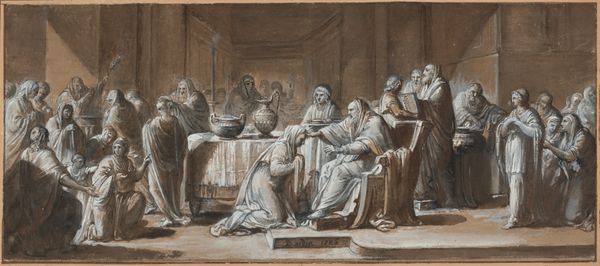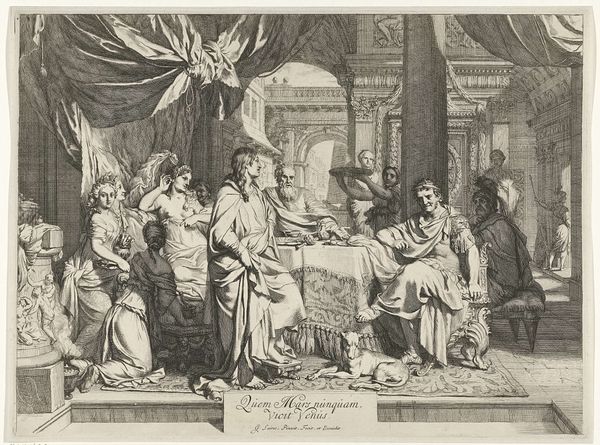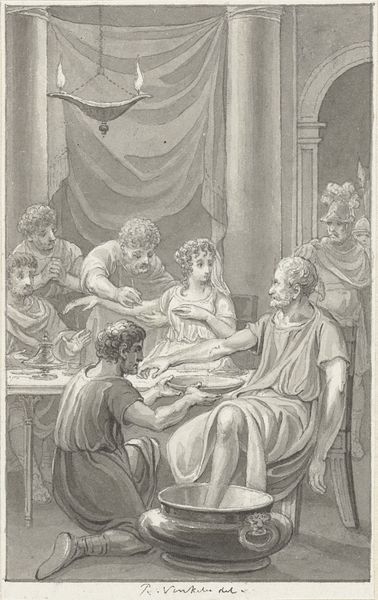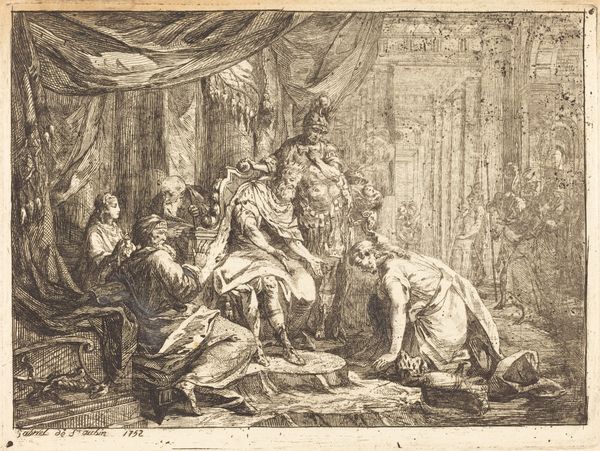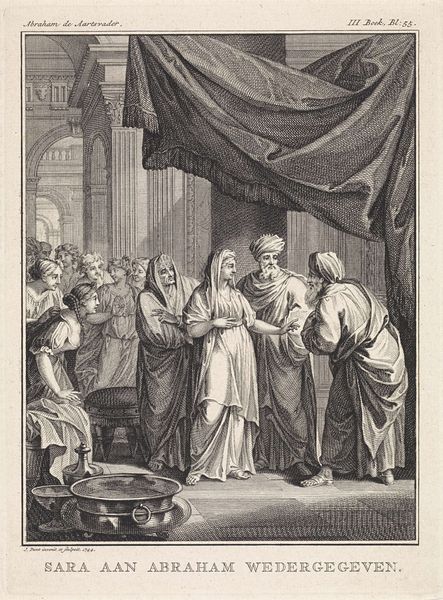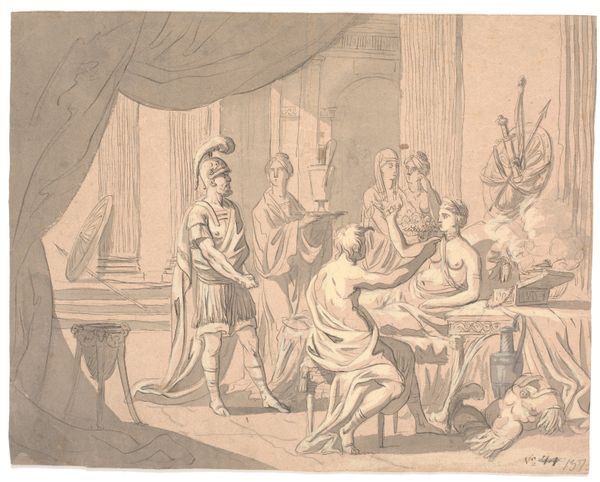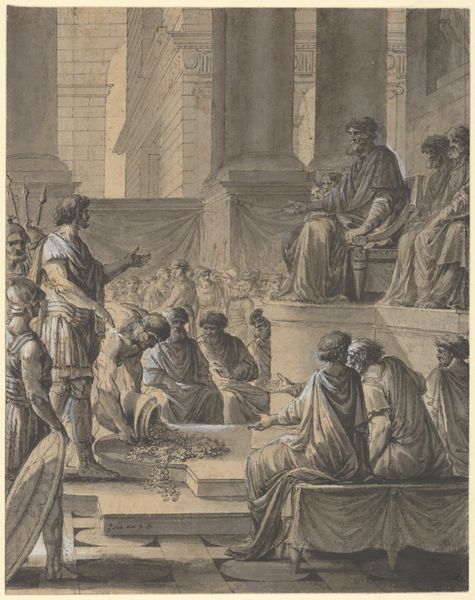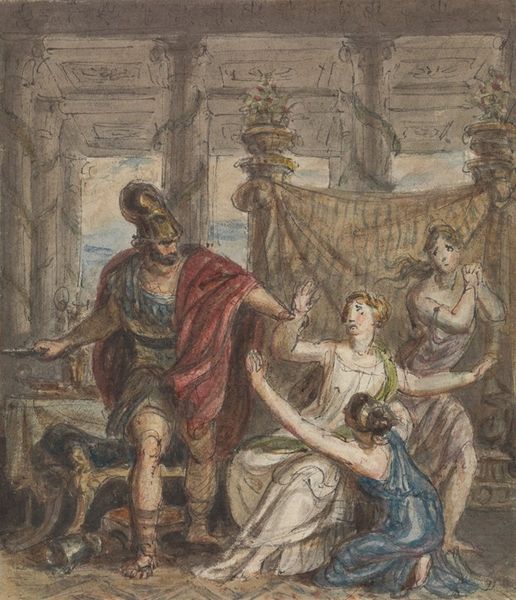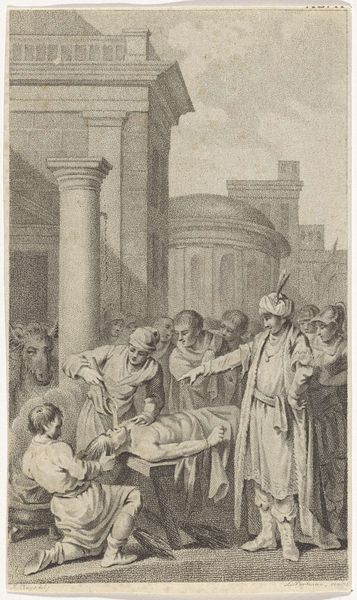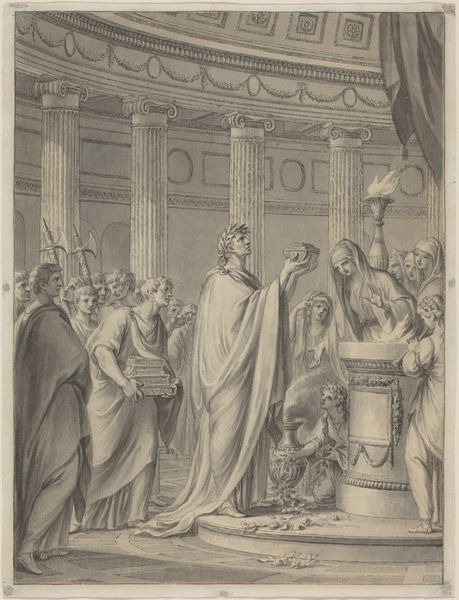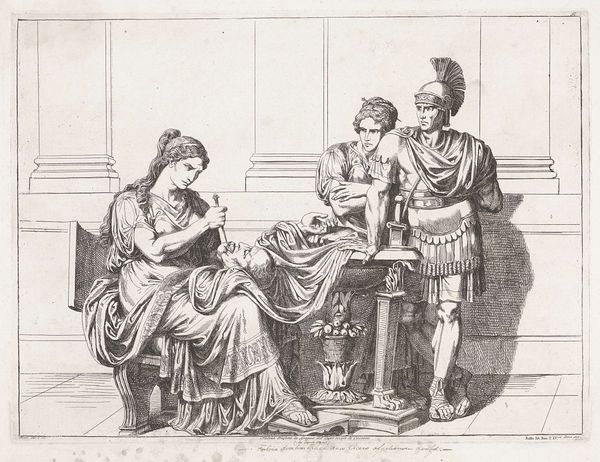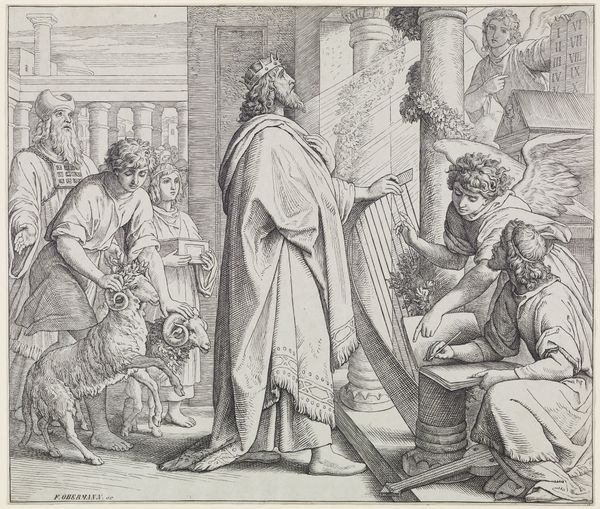
Banquet Scene, with a Roman Soldier Kneeling to a Famale Figure Sitting on a Throne
0:00
0:00
drawing, watercolor, ink
#
drawing
#
narrative-art
#
charcoal drawing
#
figuration
#
watercolor
#
ink
#
coloured pencil
#
ancient-mediterranean
#
history-painting
#
watercolor
Copyright: Public Domain: Artvee
Editor: This is Robert Smirke’s drawing titled "Banquet Scene, with a Roman Soldier Kneeling to a Female Figure Sitting on a Throne," made with ink, watercolor, and coloured pencil. The drama of the moment is emphasized by the kneeling soldier; I am intrigued by how that submissive gesture contrasts with the opulent setting. How do you read this scene through a historical lens? Curator: That's a perceptive observation. Consider how representations of power function within the visual language of the time. Smirke likely drew inspiration from historical accounts or theatrical productions. Think about the narrative implications. Is this act of kneeling one of respect, defeat, supplication? And what’s the message communicated to the audience? Editor: That makes me wonder about the purpose this drawing might have served back then. Was Smirke commenting on Roman authority, or perhaps even British Imperial power through this historical tableau? Curator: Precisely! History painting often reflected contemporary concerns. Ask yourself who this image was intended for and where it might have been displayed. The art market, societal structures and dominant political views deeply affected the production and appreciation of works like these. Do you see any element in the image that explicitly shows Smirke's views? Editor: Perhaps it's the relatively small size and the sketch-like quality. This might suggest it was a preparatory work, meant for a larger project. Also, the theatrics are more on the performance of power. Curator: Exactly. That theatricality speaks volumes. The "Roman" setting gives distance. But consider, too, how audiences of his time might read those power dynamics onto their own social landscape. Editor: It’s fascinating how much a single image can reveal about the social and political context of its time. It changes my appreciation of Smirke's intention for this particular subject. Curator: Indeed. By examining the social role and cultural institutions that framed its creation and reception, we see the past—and perhaps even ourselves—in new light.
Comments
No comments
Be the first to comment and join the conversation on the ultimate creative platform.
